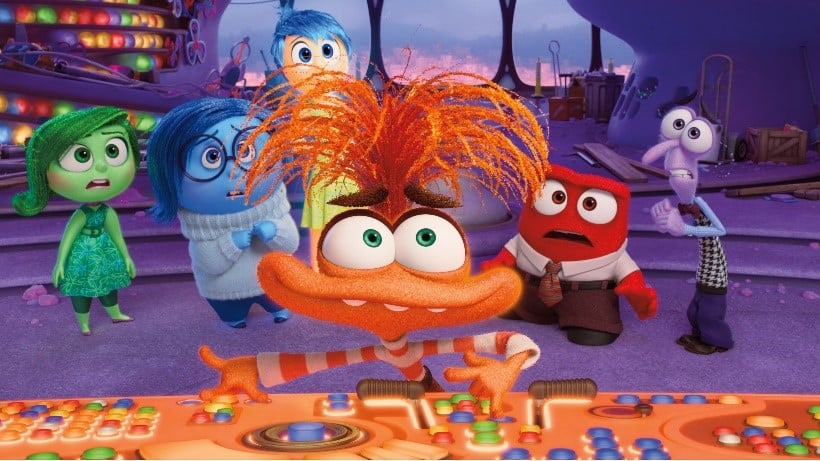By Andrew Jenck
Few films from the past decade, animated or otherwise, are as cleanly made as the original Inside Out, personifying emotions in ways that could help children process their own while maintaining emotional maturity for older audience — one of the crown jewels of Pixar. Not exactly easy to make a worthy follow-up, especially factoring in the studios’ sequel track record. Excluding a certain “toy” trilogy, the sequels often overcompensate on gimmicks while the story and arcs are largely derivative of their original film. Inside Out 2 nears the same pitfalls, but steers away as its similarities are more an extension of the themes and clever twists on familiar settings. Notwithstanding structural issues and a lack of freshness, Inside Out 2 is a solid continuation, providing the joys and sadness in a new light that arguably will connect more with teens and adults.
Riley, home of the personified emotions, begins puberty right before her hockey camp, offering opportunities in athletics and new friendships. Such a change ushers in new emotions, most notably Anxiety, who kicks the original emotions out of HQ to forge a new identity while Joy seeks to preserve Riley as she is. The premise invokes similarities to the first film: instead of core memories, Joy seeks to preserve Riley’s old “Sense of Self;” and the looming threat of depression is now anxiety panic attacks. Such derivatives feel intentional, Inside Out at its core is about emotional turmoil, something that takes similar forms but requires different ways to overcome.
Themes of puberty will draw comparisons to another Pixar film, Turning Red though Inside Out 2 is very much a different film. Turning Red is about discovering one’s identity whereas the cranium film specifically focuses on the self-induced stress from the teenage period; they complement each other, and both are universal.
Familiar locations set within the mind reflect Riley’s transitional period, by drastically changing along with her personality, offering understandable metaphors for children and harshly relatable for teens and adults. One of the best concepts involves turning the imaginative part of the brain into storyboard groups rapidly creating dozens of worse case scenarios. Few of the new concepts are fluff, impacting the plot while giving insight to Riley’s character and how potentially damaging these changes can be. Connectivity between these plot points can be messy. The end destination is clear, but the means of travel can feel inefficient, cycling through story beats with little reflection. There’s no equivalent to Bing Bong resulting in less emotional complexity as before though still present.
Despite having a literal control panel in her mind, Riley herself is not robotic. Her side of the story is the reaction to the emotions’ input, reflecting Anxiety’s takeover and that part of her wanting to hold on to her past self. At times the arc can be disrupted with a few structural issues; some elements could’ve used more build up or lack a payoff. Pete Docter was unable to return as director, so responsibilities were handed over to Kelsey Mann. Some growing pains are apparent being his first full-length film but there’s clear relatability within his guidance and the crucial scenes still hit their mark. The script is cleverly symmetrical between its plot points. As Anxiety grows increasingly, well, anxious about perfectionism and social acceptance, Joy lets her own anxiety motivate her, in a constant rush in her pursuits without thinking of long-term repercussions. Whatever the sequel lacks in tightness, it still maintains the heart.
While not quite reaching the original’s highs, Inside Out 2 still nails the emotional lows of early adolescence; a worthwhile follow up that reflects yet expands on its predecessor’s themes and story beats. Anyone who’s had low self-esteem (especially as a student-athlete), will feel seen in the story. Whatever it lacks in focus and plotting, it mostly makes up for in maturity and energy. Pixar will inevitably make more sequels, but this film can serve as a template of how to capture the essence of what made their stories emotionally impactful. Messier, quicker, and not as focused, but what better way to capture teenage anxiety?


